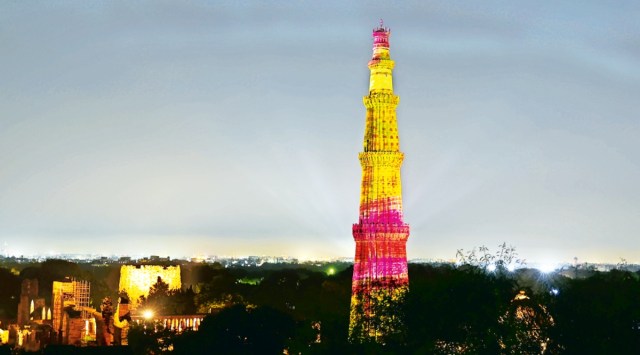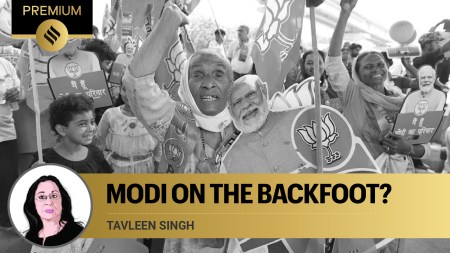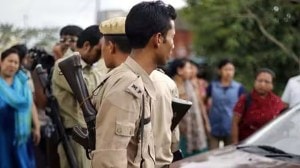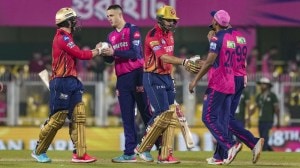- India
- International
As night falls, Qutub glows in new light — a show for next 5 yrs
"We will continue the project for five years. It is under the ‘Mera Gaon Meri Dharohar’ programme," said Saurav Bhaik, Tagbin's CEO and founder, referring to the government initiative mgmd.gov.in that showcases cuisines, art forms, architecture and rituals from villages around India.
 Qutub Minar on Wednesday. Tashi Tobgyal
Qutub Minar on Wednesday. Tashi Tobgyal The yellow floodlights pointing at the centuries-old sandstone dimmed. The Arabic verses on the minaret disappeared from view, as did the families wandering around the tower’s now dim glow. A countdown was projected on the tall tower – electricians scrambled to get a good view, parents whipped out their phones to click a flurry of photos, and children were urged to cease frolicing and look up at the tower.
The words ’75 years of independence’ hailed the beginning of the 15-minute light show on the diversity of rural India which takes place each night at the Qutub Minar at 8.15 pm. The show was started on July 27 by the Ministry of Culture in collaboration with Tagbin, a company specialising in digitally immersive experiences in physical spaces.
“We will continue the project for five years. It is under the ‘Mera Gaon Meri Dharohar’ programme,” said Saurav Bhaik, Tagbin’s CEO and founder, referring to the government initiative mgmd.gov.in that showcases cuisines, art forms, architecture and rituals from villages around India.
Some of the villages depicted on the Qutub Minar on Wednesday included Dong in Arunachal Pradesh, Kongthong in Meghalaya, Chhind Kalo in Chhattisgarh, and Amadubi in Jharkhand. Visitors thronged to the monument on Independence Day and are expected to return in large numbers in the week leading up to the G20 summit.
“The projections uniquely depict 20 villages drawn from 3.5 lakh villages around India. It’s a collaboration between our people in the office and the government. People from the (government’s) Common Service Centres talk to villagers. They post the information to us through an app. Our team fact-checks it and decides how to present it,” said Bhaik.

“Elderly people and panchayat heads told us their stories as did doctors and teachers. Youngsters were also asked where they saw their village going,” he added.
Sixteen projectors surrounding the monument showcased flowing taps, flying leaves and rotating windmills, in a reference to what the villages are best known for. Speaking about the challenges of the light show, Bhaik said: “It’s not a flat or white surface, so it was difficult to do projection-mapping. We had to do a colour palette test. For example, even if you project the colour blue, the resulting colour is completely different. So you have to factor the colour and topography of the monument.”
On the importance of preserving the aura of medieval-era monuments during digitisation projects, Bhaik said: “As long as you are respecting the monument and not damaging it, there is potential for such light shows. We have been telling stories through these monuments for a long time and we can tell new stories too.”
“The aesthetic of the light show is themed on Indian culture,” added Sanzeed Mirza, Tagbin’s chief creative officer. “The art was inspired from our traditional roots stretching back to the mandala art form, while the palette reflects every shade of our rich culture.”
May 15: Latest News
- 01
- 02
- 03
- 04
- 05






































